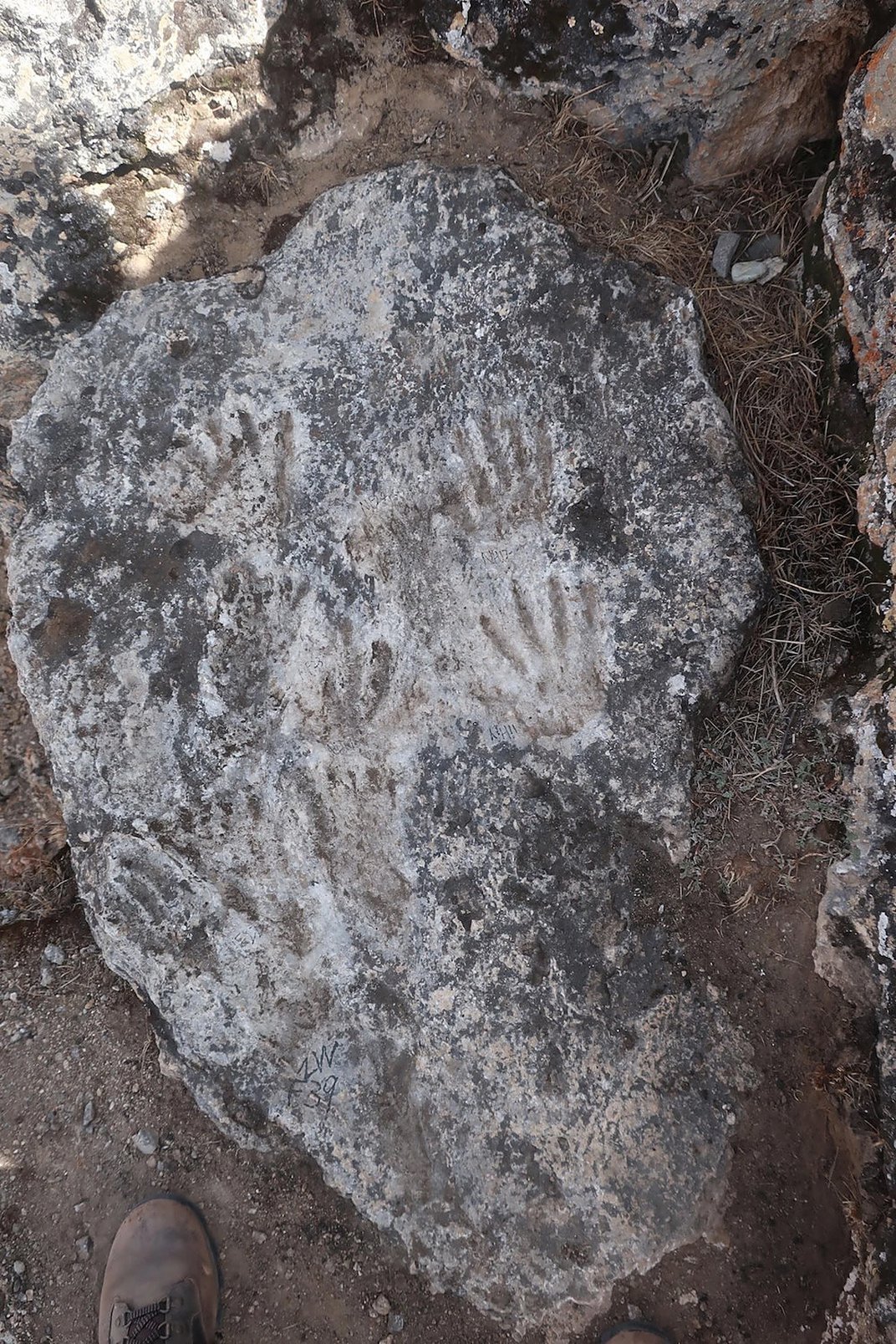
A neatly-laid out sequence of five handprints and five footprints found near the village of Quesang in Tibet is being hailed as the world's oldest human art. The fossilized indentations were etched on travertine — pliable limestone formed by deposits from natural springs that harden over time. Based on the dimensions, the researchers believe the footprints belonged to a seven-year-old, while the handprints were those of a 12-year-old.
An analysis conducted by David Zhang, a scientist at China's Guangzhou University, and his team, determined that the "art panel" was created between 169,000 and 226,000 years ago. The researchers, who published their findings in the Science Bulletin in late 2021, assert that the intentionally-made prints constitute the world's oldest-known example of "parietal art." The archeological term refers to all non-portable prehistoric art on cave walls, floors, ceilings, and engraved rocks. Currently, that honor belongs to the hand motifs and hand stencils found in the caves of the Indonesian island of Sulawesi and El Castillo cave in Spain. Both are believed to be between 40,000 and 45,000 years old.

"The arrangement of the prints defies any practical explanation, such as walking, or any accidental explanation, such as falling," said Cornell University archaeologist and study co-author Thomas Urban. "They appear to have been carefully arranged, implying a deliberate choice was made in placing them this way."
However, not all experts agree that the prints meet the definition of parietal art. Emmanuelle Honoré, an early-career researcher in archaeology, told Live Science, "Quesang has little to do with those two sites [Indonesia and Spain] and, except for the fact that they are all three displaying hand [and] footprints. Leaving a print in the mud or doing a stencil print with pigments is a really different process, not only from a technical point of view but also from a conceptual point of view."

But no one is disputing that the handprints are the oldest ones found thus far. "Handprints are relatively rare because there is simply less opportunity to leave behind a handprint during routine activities," Urban says. "Human hand stencils do appear as cave art at many locations, but not nearly as early as this site."
The discovery also proves that humans occupied the Tibetan Plateau much earlier than previously thought. Zhang and his team are not sure what species of ancient humans resided there or how they got there. Based on the skeletal remains found in the area, they speculate they may have been Denisovans, an earlier human ancestor that lived across Asia during the lower and middle Paleolithic.
"Denisovans are a real possibility, but Homo erectus was also known to inhabit the region," study co-author Matthew Bennett, a professor of environmental and geographical sciences at Bournemouth University in Poole, England, told Live Science. "There's lots of contenders, but no, we don't really know."
Resources: LiveScience.com, NBC.com, Gizmondo.com, newscientist.com
